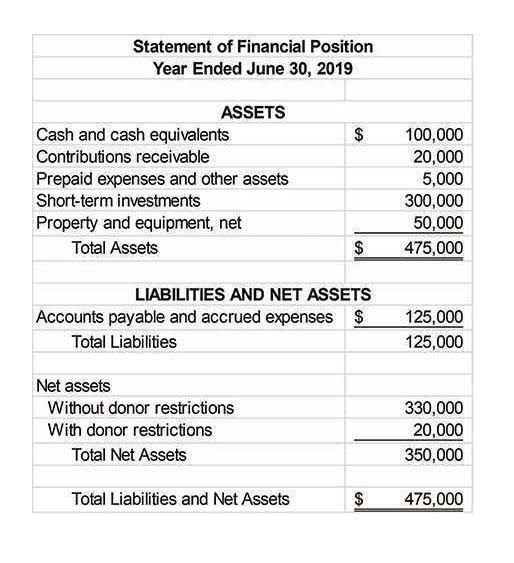Net Working Capital Formula Example Calculation Ratio

Rewarding work with a fair wage is the best way to improve living standards, while also providing people with the security of knowing they will be able to pay their bills now and in the future. The Budget also sets out the first steps of the government’s longer-term ambition to design out opportunities for non-compliance and make the tax system easier to deal with, through making better use of data and raising the standards of tax advisers who interact with HMRC. The government is putting fraud prevention at the heart of public spending decisions, with the Public Sector Fraud Authority (PSFA) assessing Initial Fraud Impact Assessments (IFIAs) submitted by departments on their highest risk priority projects. This will make sure that counter-fraud activity is considered in all major spending decisions. In addition to its fiscal rules, the government has committed to consider a wide range of metrics to inform a full assessment of the sustainability of the public finances, and will seek to improve sustainability over time.
What Is Net Working Capital? With Definitions and Formulas for Small Business
- Any change in working capital can affect cash flow, which is the net amount of cash and cash equivalents being transferred in and out of a company.
- This settlement begins to repair the justice system by investing up to £2.3 billion in prison expansion across 2024‑25 and 2025‑26.
- What is a more telling indicator of a company’s short-term liquidity is an increasing or decreasing trend in their net WC.
- Current assets include assets a company will use in fewer than 12 months in its business operations, such as cash, accounts receivable, and inventories of raw materials and finished goods.
- The government has taken further difficult decisions across tax, spending and welfare through the Budget and Phase 1 of the Spending Review in order to repair the public finances.
The government will maintain the Corporation Tax Small Profits Rate and marginal relief at change in net working capital their current rate and thresholds. This means 9 in 10 actively trading companies, including a majority of SMEs, will have a Corporation Tax rate lower than 25%. The £1 million Annual Investment Allowance will also be kept in place to provide the certainty businesses need to invest. To help ensure the Industrial Strategy is long term in nature, the government is establishing an Industrial Strategy Advisory Council chaired by Clare Barclay. The Council will monitor and advise the government on the delivery of the Strategy, working closely with business, trade unions, devolved governments, local leaders, academia, and other stakeholders.
Our Services
Generally, the larger the net working capital figure is, the better prepared the business is to cover its short-term obligations. Businesses should at all times have access to enough capital to cover all their bills for a year. Improving net working capital requires a combination of compelling accounts receivable management, efficient inventory management, negotiating better terms, reducing operating expenses, and selling off unnecessary assets. Paying off long-term obligations requires planning to avoid compromising the funds for running the business. Regularly reviewing your financial condition helps identify potential issues early so you can make informed decisions to keep working capital healthy. Handling debt effectively is essential to maintaining a business’s financial condition.

Net Working Capital: Understanding Its Impact on Business
Taken together, the measures in Autumn Budget 2024 fix the foundations of the economy and permanently boost economic output in the longer term. Sustainable public finances will contribute to a more stable business environment, supporting businesses and households to make long-term decisions, boosting investment and output. While some of the decisions taken at this event affect inflation and output within the five-year forecast, the government has prioritised investments that will pay off in the long term. The government’s growth policy priorities, under the framework of stability, investment and reform, have been structured into seven pillars, as illustrated in chapter 3. These priorities are being taken forward in partnership with business, and backed by a continuous focus on delivery supported by a Growth Delivery Unit established in HM Treasury.
- This could signal potential liquidity issues, indicating the company may struggle to cover short-term obligations.
- The government has published a response to its technical consultation on this policy.
- Generally, the larger your net working capital balance is, the more likely it is that your company can cover its current obligations.
- Therefore, companies needing extra capital or using working capital inefficiently can boost cash flow by negotiating better terms with suppliers and customers.
- Performance against the cap will be formally assessed by the OBR at the first fiscal event of the next Parliament.
- The OBR’s latest forecast shows that the ODA fiscal tests are not due to be met within the Parliament.
- The working capital ratio is a method of analyzing the financial state of a company by measuring its current assets as a proportion of its current liabilities rather than as an integer.
Impact of Net Working Capital on Cash Flow
- Since the growth in operating liabilities is outpacing the growth in operating assets, we’d reasonably expect the change in NWC to be positive.
- The OBR judges that higher investment will add to GDP during the forecast period, and if sustained will increase the size of the economy in the long term.
- Working capital can’t be depreciated as a current asset the way long-term, fixed assets are.
- Beyond these first steps, Phase 1 of the Spending Review confirms 2024‑25 and 2025‑26 budgets for all departments, providing the targeted funding necessary to stabilise and support public services.
As for accounts payables (A/P), delayed payments to suppliers and vendors likely caused the increase. The net effect is QuickBooks that more customers have paid using credit as the form of payment, rather than cash, which reduces the liquidity (i.e. cash on hand) of the company. But if the change in NWC is negative, the net effect from the two negative signs is that the amount is added to the cash flow amount. If calculating free cash flow – whether on an unlevered FCF or levered FCF basis – an increase in the change in NWC is subtracted from the cash flow amount. An increase in the balance of an operating asset represents an outflow of cash – however, an increase in an operating liability represents an inflow of cash (and vice versa).
Autumn Budget 2024 (HTML)
The Budget increases the lower rate of Capital Gains Tax (CGT) from 10% to 18% and the higher rate from 20% to 24%. This ensures asset owners pay their fair share whilst keeping the UK tax system internationally competitive, with lower rates than comparable EU countries. CGT rates for Business Asset Disposal Relief and Investors’ Relief will rise gradually to 14% from 6 April 2025 and match the main lower rate of 18% from 6 April 2026, to allow business owners time to adjust to the changes.

Personal tax & savings

This indicates good short-term financial health, allowing the company to invest and grow. A negative working capital situation occurs when current liabilities exceed current assets. This could signal potential liquidity issues, indicating the company may struggle to cover short-term obligations.
Financing
These are tools that can be used to support growth while also generating a positive return for the taxpayer. The government’s new debt rule will recognise the value created by these investments, thereby supporting growth policies in a fiscally sustainable way. In addition, the government is ensuring it fosters stability across all the pillars of the growth mission by providing long‑term certainty in its plans for businesses and the wider economy.

Reinforcing the government’s growth mission, the review’s recommendations will directly inform the development of the industrial strategy and sector plans that will be published alongside Phase 2 of the Spending Review. City and Growth Deals – Proceeding with the Mid South West and Causeway Coast and Glens City and Growth Deals. The Budget confirms £162 million investment over 15 years, subject to value for money assessments of business cases, supporting economic growth in Northern Ireland’s rural regions. The government also confirms £25 million for the 10-year investment in the Argyll and Bute City and Growth Deal to drive inclusive and sustainable economic growth, subject to a value for money assessment of business cases. Private Intermittent Securities and Capital Exchange System Stamp Taxes on Shares Exemption – The government is committed to delivering the Private Intermittent Securities and Capital Exchange System (PISCES), a new innovative market for trading private company shares.
